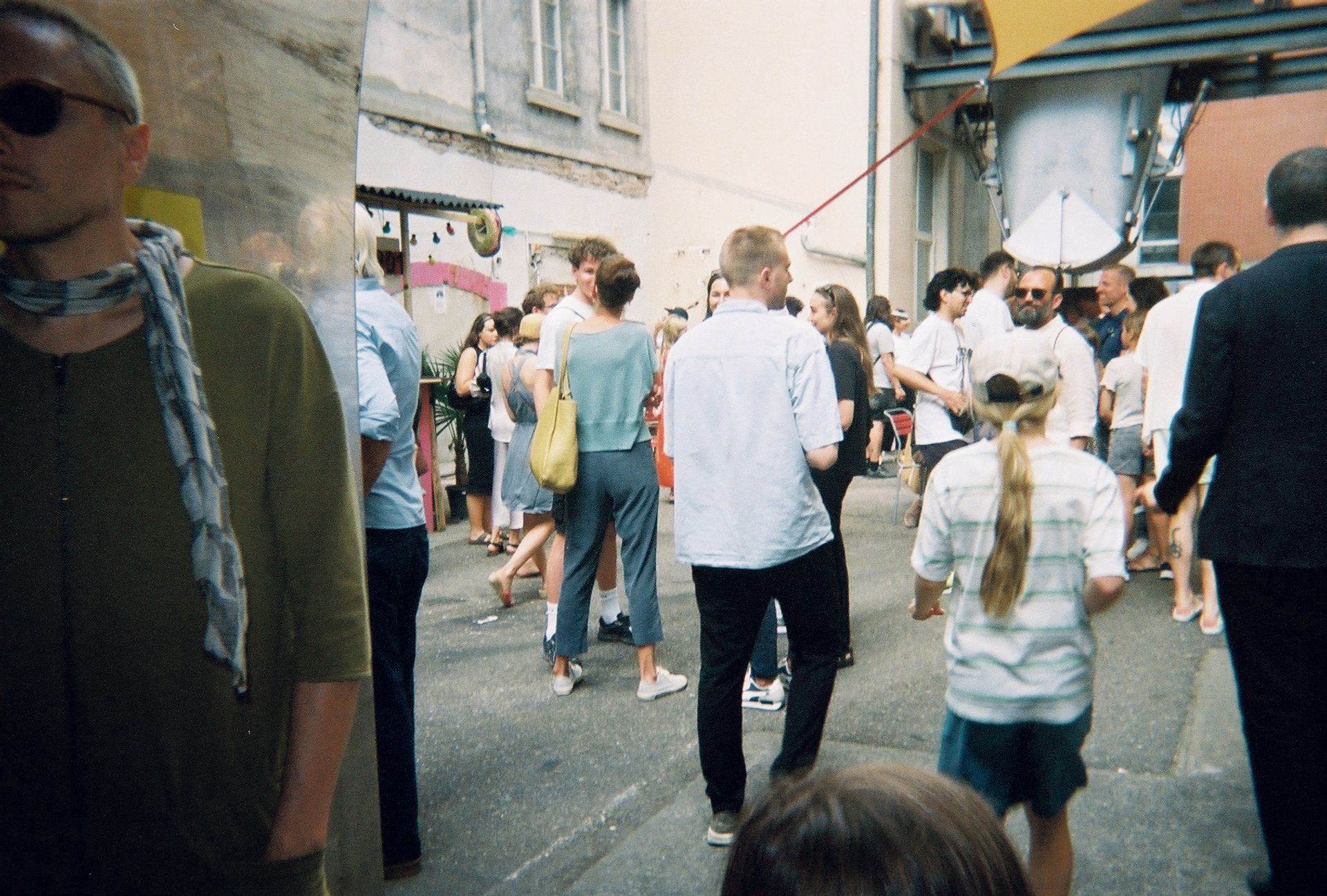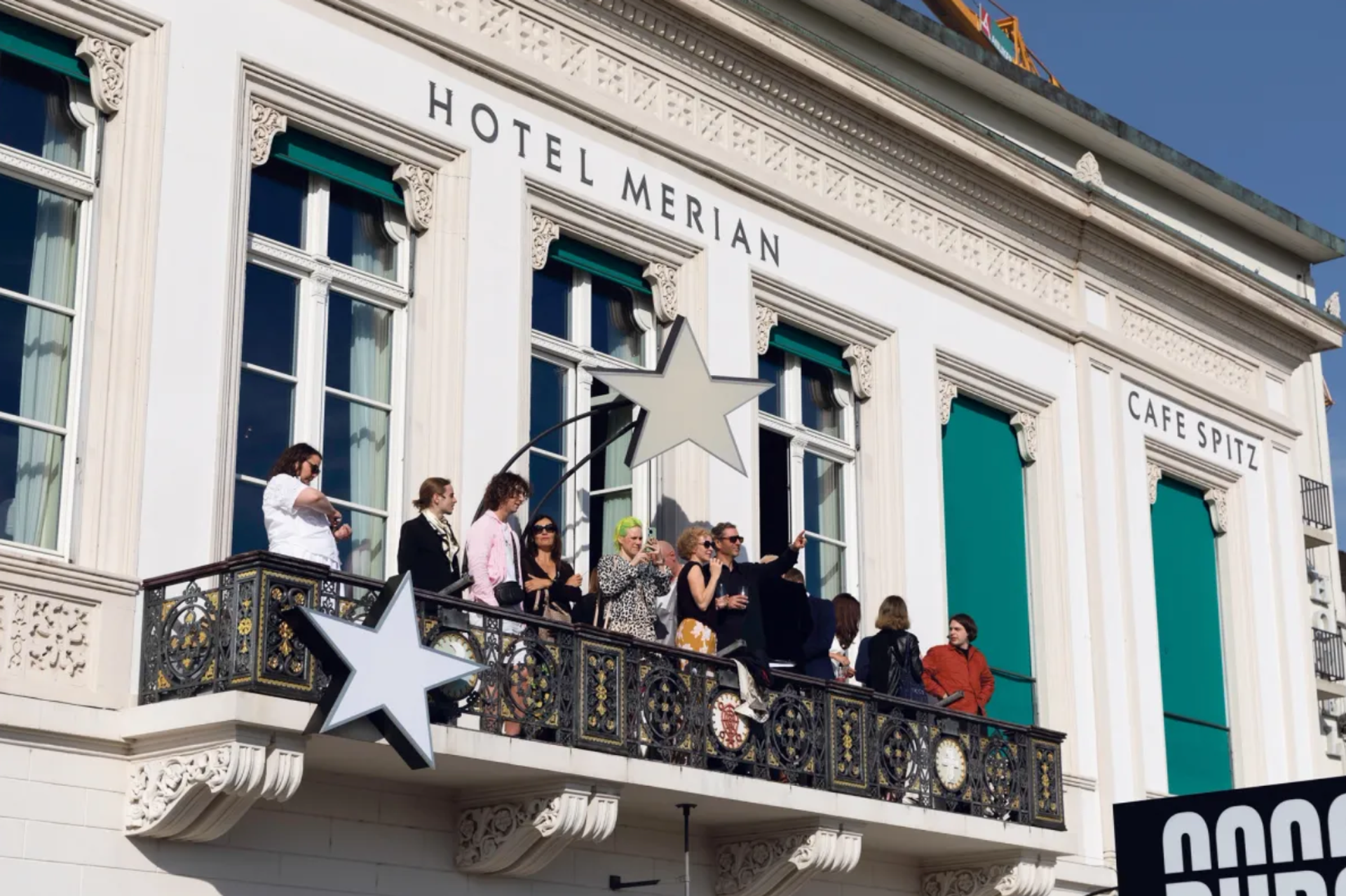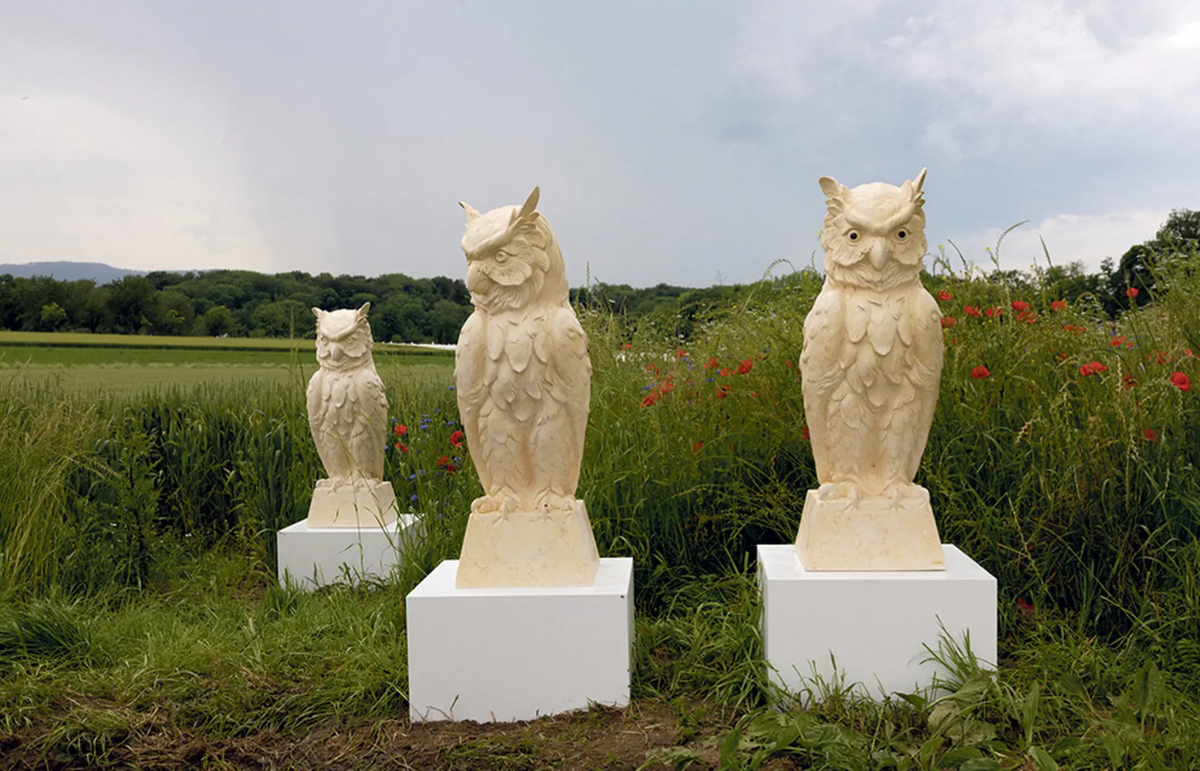Drive 15 minutes south of the newly verdant Messeplatz, temporarily home to Agnes Denes’s wheatfield installation, to find an even greater art world pastoral turn. Basel Social Club (BSC, until 16 June), a roving art project that combines elements of an exhibition, sales platform and social venue, has shifted to 50 hectares of farmland for its much-anticipated third edition.
Launched in 2022, the first two editions of BSC were held in the city of Basel—initially in a villa and then in a vast mayonnaise factory. Word quickly spread of its freewheeling ethos that sought to revitalise a week dominated by sterile fair halls and besuited collectors. The general verdict: a resounding success.
The idea to stage this year’s edition on a farm began as a joke, says Yael Salomonowitz, a curator who co-founded BSC with the gallerist Robbie Fitzpatrick and the artist Hannah Weinberger. “We thought after a week in a factory it would be nice to plant our feet in the grass.” Such bucolic offerings abound at the free-to-enter BSC, where visitors can wander the fields, pick strawberries and watch cows graze. The main attraction is, of course, the art. Around 100 works are spread across the site, akin to a sculpture park.
Almost all are placed outside, which makes weather resistant materials key and keeps the presence of paintings—which proliferate at art fairs—to a bare minimum. Some works even benefit from downpour, like the late Margaret Raspé’s installation Rain Drums (1988/2023), brought by the Berlin-based Galerie Molitor and on sale for around €15,000.

Basel Social Club, held last year in a mayonnaise factory, has an appealing mix of galleries, project spaces, films and performances David Owens
BSC is a non-profit and, its organisers insist, “not an art fair”. “This year we wanted to offer a real experience—something less consumable,” Salomonowitz says. Nonetheless, BSC is still a selling platform in which galleries pay a modest €2,500 to take part, and most spaces from the Global South can show for free. Not all the art is for sale, however, with a portion of loans on show, including a processionary performance work by Paulo Nazareth from the Pinault Collection. And, unlike an art fair, BSC’s business model is less reliant on gallery participation, as most of its funding comes from Swiss cultural foundations, including that of the retail giant Migros.
Along with project spaces and emerging galleries, well-established ones are taking part too. Esther Schipper, in collaboration with Drei from Cologne, is showing three marble owl sculptures by Julia Scher, each priced at €35,000. “We were drawn to BSC’s experimental format, the context of showing work outdoors is something we don't get to do very often, and is an exciting opportunity for artists,” says the Esther Schipper director Manuel Miseur. The works have yet to sell, but he notes there was interest from curators present on its opening day.
But selling, or in fact viewing, art in a speedy manner is somewhat at odds with this year’s BSC. “We want to decelerate time. People come to Basel and say, 'I did Kunsthalle, I did the fair.' They rush through the motions,” Salomonowitz says. Visitors on a sunny afternoon this week were sitting on sofas in fields with beers in hand, watching films in a woodland clearing and lounging in the sun with ice-creams. This week’s events programme included a rousing set from the singer Haddaway, who had crowds chanting his 1993 hit single What is Love.
“If you take a birds-eye view of an art fair, you’d see people mostly doing things that aren’t looking at art,” says Melanie Gerlis, The Art Newspaper editor-at-large and author of the 2021 book The Art Fair Story. Gerlis argues that an enduring strength of fairs is the need for a relationship-based industry to convene in person. “The BSC model is responsive to that,” she says.
Global imitators
The popularity of BSC can perhaps best be measured by its growing number of imitators. Over the past year, during major art fair weeks in cities like Hong Kong, Seoul and Milan, commercial exhibitions have sprung up with a similar format: no stands, no gallerists clutching iPads, ample refreshments, and plenty of space to mingle and let loose. Each is focused on making the experience of being around art as enjoyable as possible.

Art Basel took over the Hotel Merian for a new social venue, where there is a performance programme alongside bars and restaurants David Owens
Art Basel has this year launched its own social venue, at the riverside Hotel Merian, which, alongside a performance programme, has a restaurant and bar where fairgoers are invited to stay late into the night. “Since its inception, Art Basel has innovated and rejuvenated itself,” says the Art Basel director, Maike Cruse. But if the organisation’s strategy of the past two decades has been to address the geographical diversification of the art market—planting flags in two of the world’s largest art markets by launching shows in Miami Beach and Hong Kong—its next years will likely be spent adapting to generational changes.
The much-discussed “great wealth transfer”, in which the fortunes of baby boomers will move onto their millennial inheritors, is set to overhaul the industry. “The generational wealth shift is estimated between $50 trillion and $100 trillion,” says Marc Spiegler, the former global director of Art Basel, and adviser to the experiential art platform Superblue. “A massive amount of money is going to a generation whose spending patterns reflect a pronounced desire to own less and experience more. And that creates an even greater need for galleries, fairs and other commercial events to deliver more than just an efficient sales platform for objects.”
When I started coming to Art Basel, the whole art world would gather at Kunsthalle bar and we could all fit insideMaike Cruse, Art Basel
A generational shift
“The generational shift is pressing, and we are preparing for it,” Cruse says. “When I started coming to Art Basel, the whole art world would gather at Kunsthalle bar and we could all fit inside. The industry has grown and changed so much since then and so we need to adapt.” Besides the Merian, Cruse’s updated Parcours section, concentrated on Clarastrasse near the fair, also has a social element by encouraging people to gather in one place. “Meanwhile, our VIP representatives are increasingly focusing on bringing in younger collectors, especially in Asia,” she says.
To what extent a renewed focus on social aspects of art fairs has been spurred by BSC is subject to debate. Art Basel has previously launched similar social venues, such as Kopfbau in 2011, that saw a programme of festivities and exhibitions take over a soon-to-be demolished building on the Messeplatz during the fair week.
“It is certainly interesting that Art Basel launched the Merian programme this year. We have built a lot of attention and brought fresh air to Basel,” Salomonowitz says, adding that BSC had initially been offered the Merian space. She says there is “no relationship in terms of support between Art Basel and Basel Social Club”.
For now, BSC will likely continue to operate as a satellite event to Art Basel. But will this always be the case? “We are considering how to become less adjacent to an art fair, to move to different cities and locations,” Salmonowitz says. “Art fairs have existed for a while but the model is no longer interesting or ecologically sound.”
The reality of art fairs continues to be of concern to fairgoers and exhibitors alike, with mounting overhead costs and environmental issues calling into question their long-term sustainability.
The model of BSC appeals not just to visitors, but to exhibitors too. The London gallerist Ilenia Rossi notes that there is “camaraderie between dealers rarely found at a fair. We end up giving our collectors tours of the entire site, effectively showing them everyone else’s work.” Nicolas Nahab, a director of Mendes Wood DM, says the gallery participates because the BSC founders are their peers and friends. “We work collaboratively and support non-hierarchical structures.”
The community-minded ideals of BSC give it a utopian feel, one that is especially fitting for its most arcadian edition yet. It leads one to wonder if signs for a better future might be found in these fields.
“Basel Social Club is correct in its way of thinking, although perhaps a bit ahead of its time,” Gerlis says. “But in years to come we will see many fairs that resemble Art Basel die out and be replaced with new offerings.” Still, she adds: “Galleries don’t do business for conviviality, and a large chunk of annual revenue is made at fairs. I don’t foresee that stopping anytime soon.”


